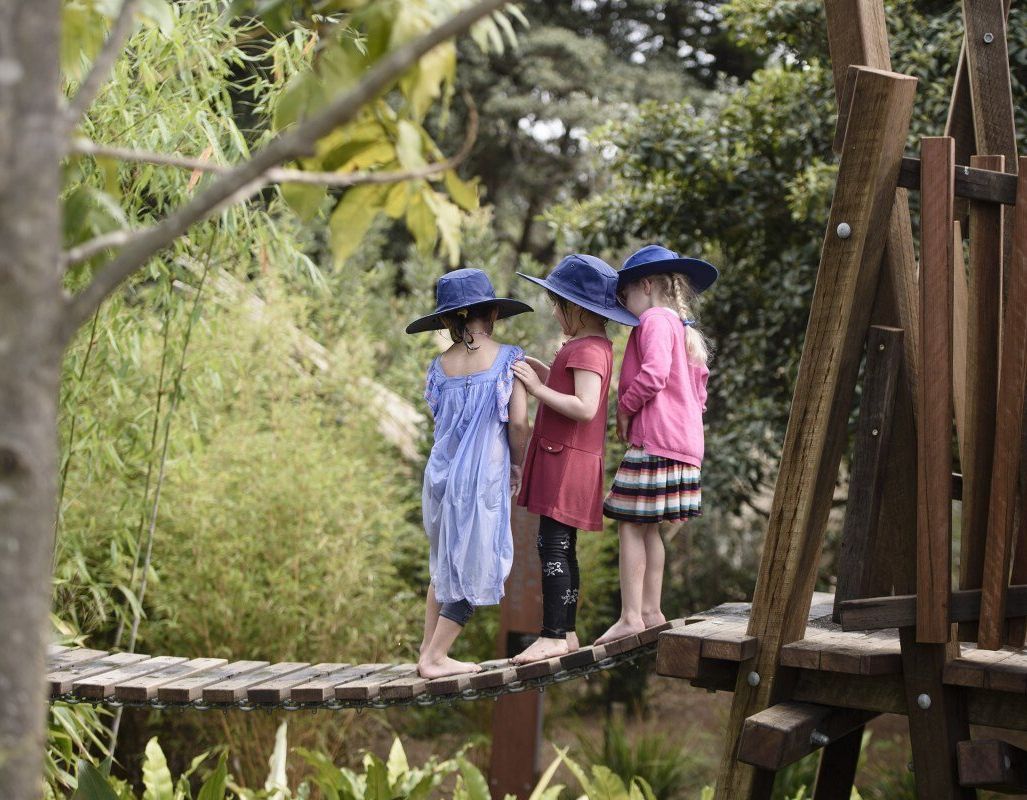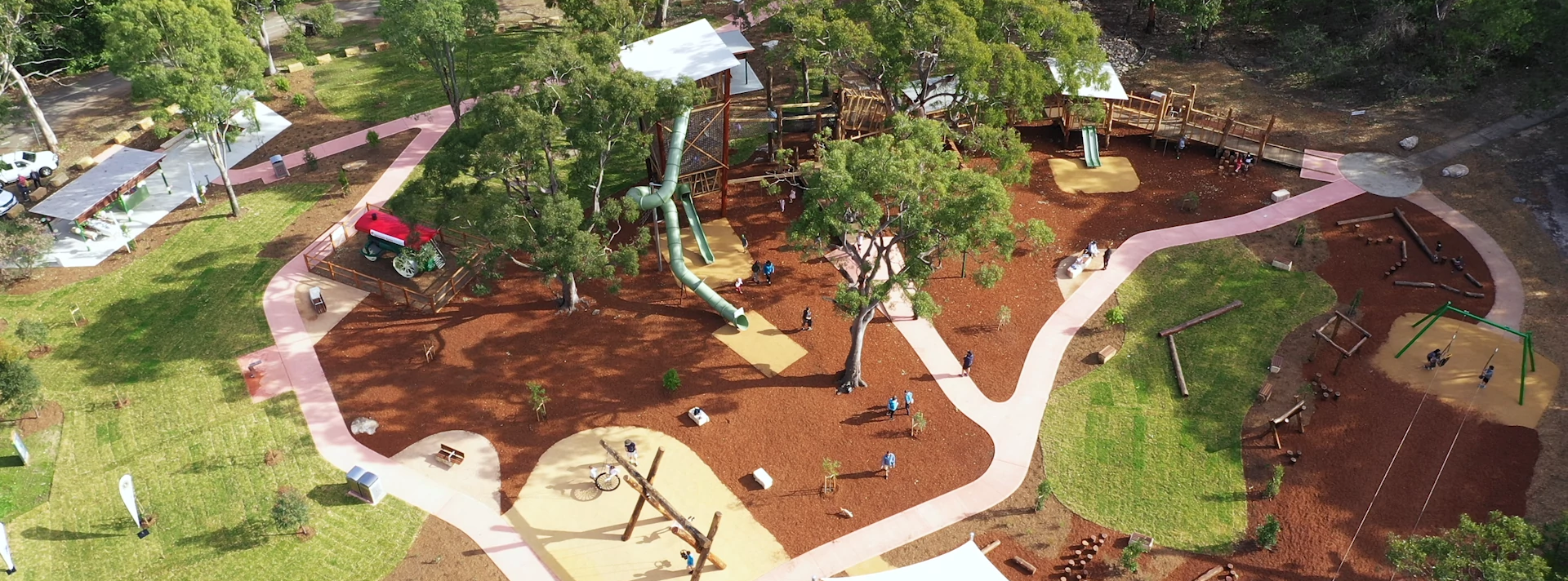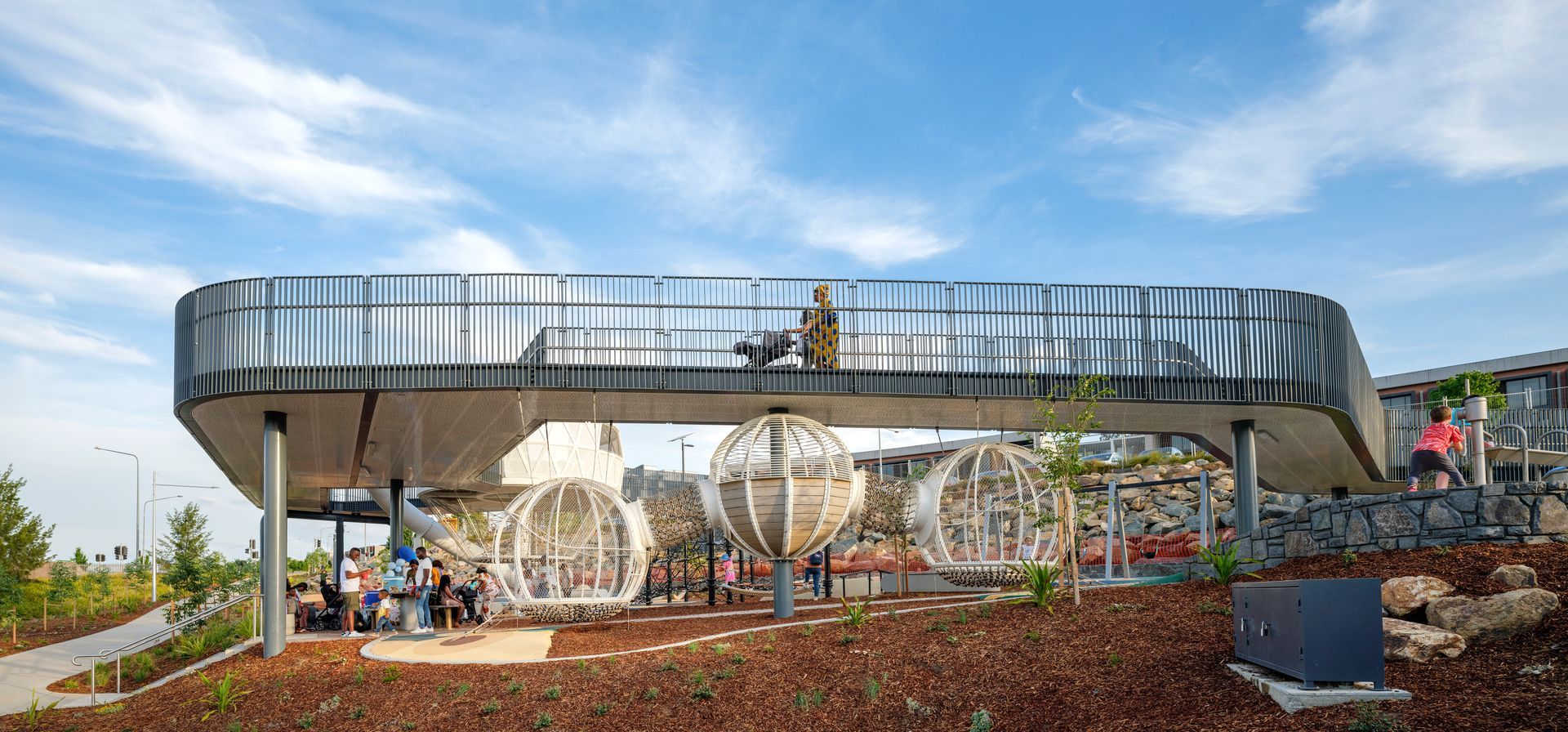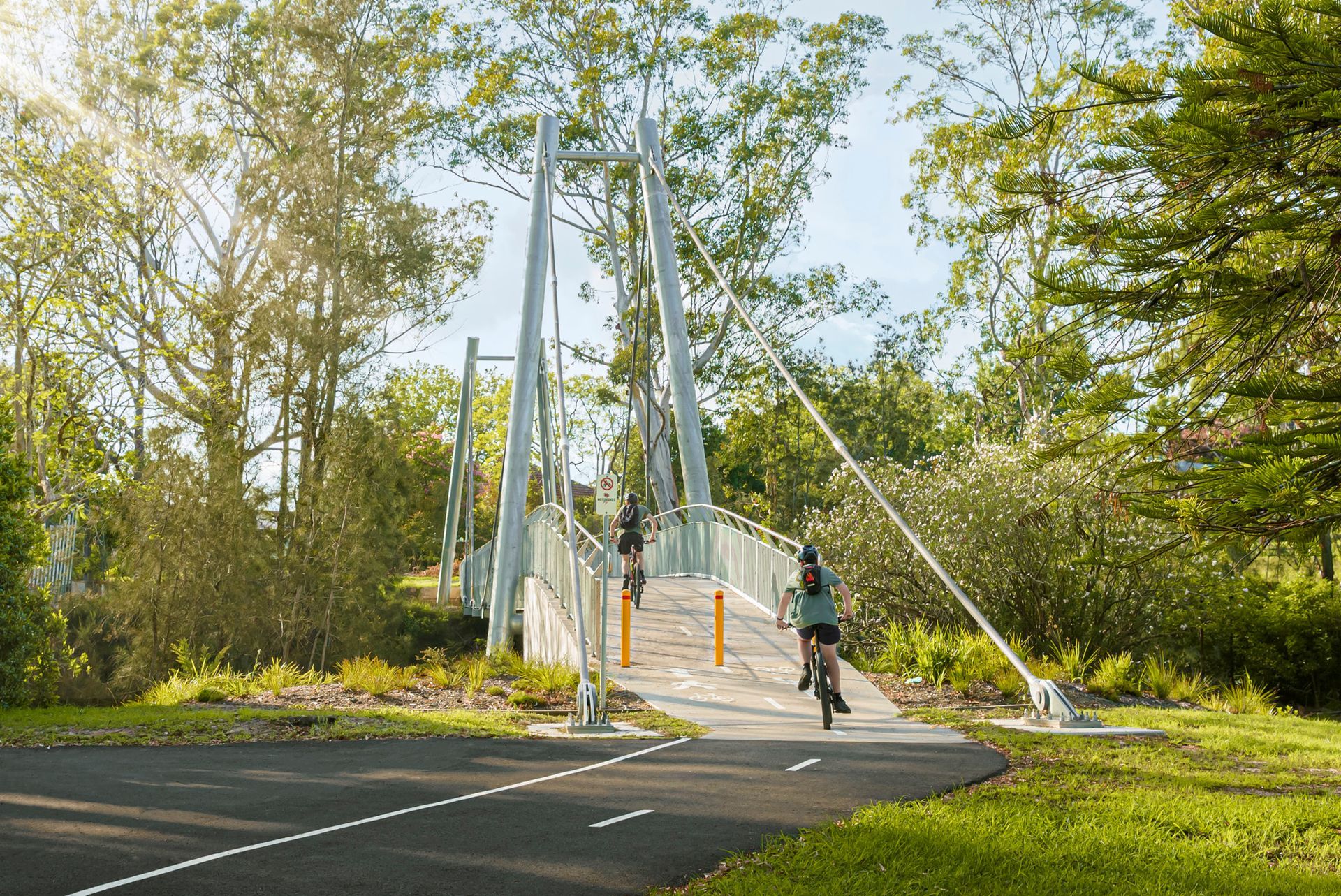Turning screen time into green time.
The outdoors. It used to be the only place Aussie kids wanted to spend their time.
But the digital age has surrounded us with technology at every turn. Screen time is up and green time is down – and the risks are very real.
With so many devices and distractions competing for their attention, it’s critical to ensure young children and adolescents continue to have ample opportunity – and incentive – to play, explore and socialise outdoors in their local communities. Because all the wonderful benefits of doing so remain as strong and important as they ever were, arguably even more so.
Green time is development time.
Screen time may be fun for kids and easy for families. But green time is where the real magic happens. It’s essential for the physical, cognitive and emotional development of our kids. It teaches them everything from problem solving, creativity and resilience, to risk assessment, socialisation and communication skills.
As the simply excellent Muddy Hands Australia Report (2017) explains, green time is also a whole lot of fun. “Children play (outside) because it’s fun. And because it’s fun, they keep playing. But it is far more than mere indulgence; it is essential to children’s health, wellbeing and learning. It is part of a good childhood.”
“Active free play is critical in helping children develop balance, co-ordination and improved motor fitness,” the Report continues. “It helps develop fine motor skills that are essential for holding a pen and a paintbrush, for ball control and for building core strength, skills that will underpin a child’s physical fitness for many years to come.”
The Report also uncovered a wealth of literature suggesting environmental stewardship and connection with place as adults is strongly linked with the amount of time we spend immersed in nature when we are growing up.

Like nature, the evidence is all around us.
Even just a quick Google reveals an avalanche of global evidence showing the importance of prioritising Green Time over Screen Time for people of all ages, but especially children. Here are just some of the findings that caught our eye:
- In research cited by Wells & Evans in 2003, when 100 children from urban areas aged 9-12 years old were requested to make drawings of their favourite places, 96% of the illustrations were of outdoor places, while only four drawings reflected interior spaces. A 2009 study conducted in Canada found similar results.
- A 2022 study in Denmark showed that limiting children’s recreational screen/media led to a direct and significant increase in levels of physical activity.
- 2006 research funded by the Economic and Social Research Council of the UK suggested the growth of TV and video game cultures, alongside the decrease in opportunities for experiential play, has taken away the type of active play which helped children experience how the world operates and make informed judgments about certain abstract concepts encountered during play.
- A Swedish study compared children from two day-care centres set in urban environments: one surrounded by buildings, another surrounded by orchards as well as an untamed garden and a woodland. Children from the more natural centre were found to have fewer sick days, better motor coordination and better attention levels.
- Enriched natural environments open avenues for exploration and building in older children, which aids in orientation and developing a sense of direction (Kellert, 2002). It also results in unique developmental benefits in learning and memory, provides opportunities to accrue and display decision-making skills and stimulates problem solving and creative thinking, due to the varied and unstructured characteristics of natural settings.
- Among younger children, small-scale natural environments and simple features like flowers, stones, sticks and water assist in stimulating imaginative play, considered a foundation of social and cognitive development (Heerwagen, 2009).
- Play and motor development, developing a sense of identity, autonomy, psychological resilience and learning healthy behaviours are key elements of child development fostered through contact with nature (Kellert, 2004).

It's all about balance.
Clearly, it’s unrealistic – or even advisable – to expect our kids to completely cast aside their phones, gaming consoles and other electronic devices. That horse bolted many years ago! But the facts are crystal clear and there’s a compelling need to find a healthy balance that keeps encouraging Aussie kids (and adults, for that matter) to get outdoors and provide safe, inspiring and easily-accessible spaces for them to do it.
The responsibility for achieving this falls on everyone from parents and teachers, to planners and policymakers, to developers and designers. Fleetwood very much included.
We owe it to our kids. We owe it to the future.
REFERENCES
University of Southern Denmark (2022)
Cath Prisk and Dr Harry Cusworth (2017)
Beyond Blue to Green, Literature Review.
Mardie Townsend and Rona Weerasuriya
Active Healthy Kids Global Alliance (2022).
Want to help your community reconnect with the outdoors?
We recognise that each project is unique and requires a tailored approach. Whether you're looking to build a bridge or boardwalk, shade or play structure, we are here to help.
Contact us today to explore the possibilities for your project. Our team of experts will collaborate with you to create a solution that can make your project vision into a reality!
More from Fleetwood Files.
Explore
Certifications
Environmental Management : ISO14001
Quality Management : ISO 9001
OHS Management : ISO 45001
All Rights Reserved | Fleetwood Urban | Privacy Policy





